Saddle Rugs and Tibetan Culture
A tremendous weaving culture arose on the Tibet Plateau during the early Neolithic Age. This culture gave rise to one of the most well-known Tibetan arts: the rug. Known for their rich colors, unique decorations, and exquisite crafts, Tibetan rugs are classified as having two functions: religious and utilitarian. Religious rugs are used as seats of power during invocations. They often emulate forms from Buddhist and shamanic iconography, like tiger hides. Though much more common, utilitarian rugs such as saddle rugs also express the local people’s religion. Every Tibetan family had utilitarian rugs, and the typical patterns usually included lions, butterflies, and flowers. More detailed and intricate patterns implied the socioeconomic status of the owner.
Historically, rugs were also central to the tradition of horseback riding in Tibet. Horses continue to play an essential role in Tibetan communities today. The horse is not only the main transportation for indigenous citizens but also an important part of Tibetan people’s religious ceremonies, traditional festivals, and entertainment. Every year, Tibetan people have horse racing festivals to show respect to their ancestors. The glory of participating in horse racing reveals the virtue of courage, wisdom, and strength.
This exhibit features a selection of rugs from the Nicholas Salgo Collection. Focusing on the single rug below, the exhibit draws connections to many others through its imagery, color, and form. Together, these qualities represent Tibetan cultural values expressed through the beauty of textiles.
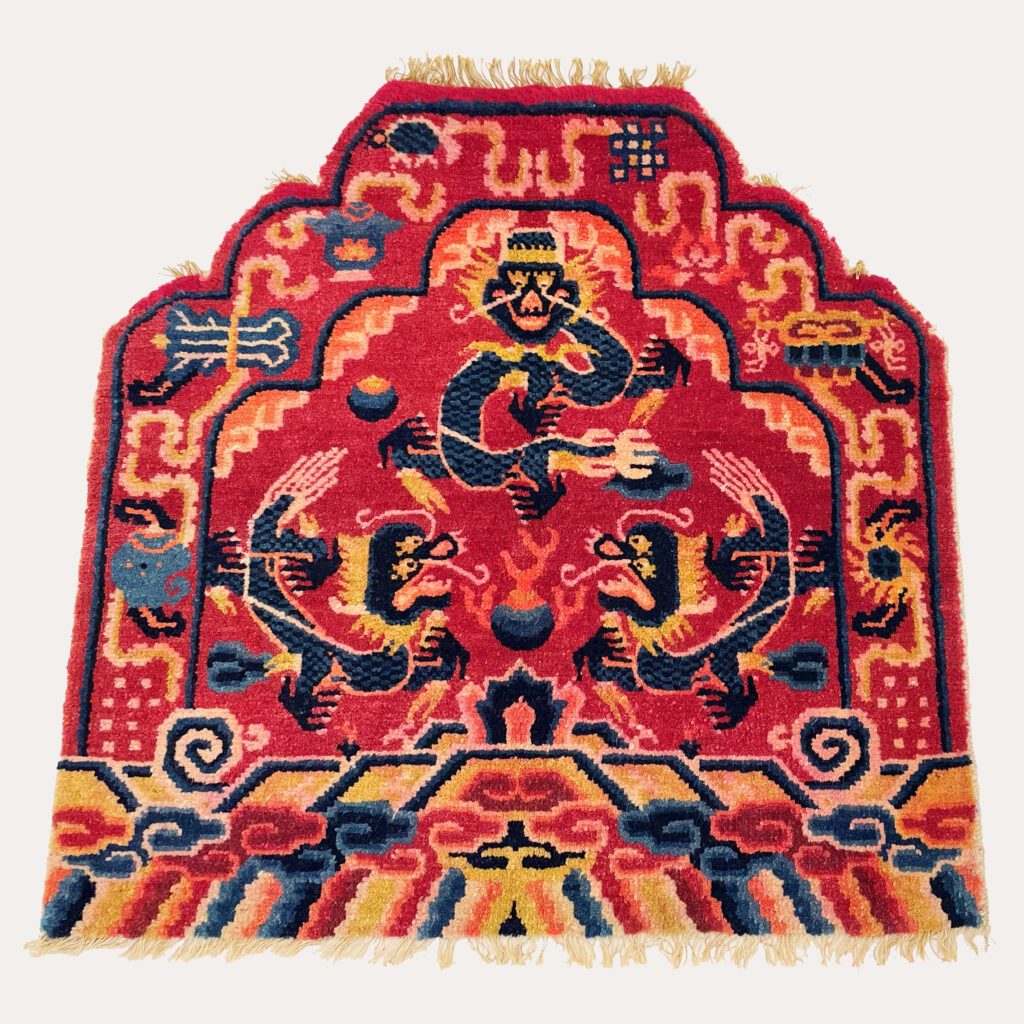
Saddle Rug
Tibet, 2011.04.E.45
In the center of this red mat are three black dragons playing with a flaming pearl. The bottom of the saddle rug consists of a cloud-band border. The fringe of the mat consists of a scrolling design and Tibetan Eight Auspicious Symbols, curving in an arc from the bottom left to the bottom right:
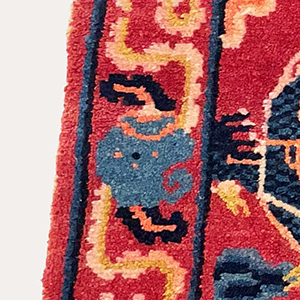
- The conch shell of the authority that banishes evil spirits and mitigates natural disasters
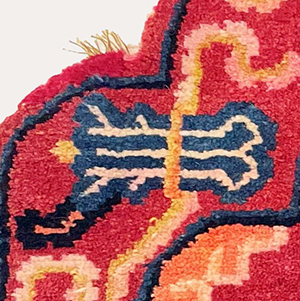
- The banner of victory represents spiritual victory
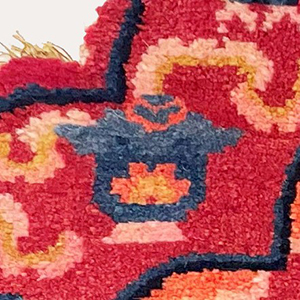
- The treasure vase of the acute mind
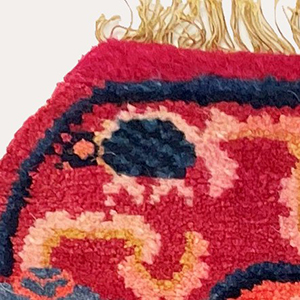
- The goldfish of the auspicious mind
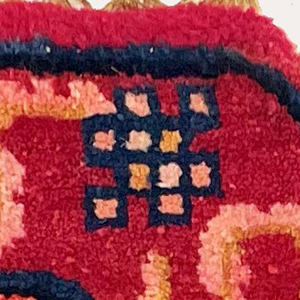
- The endless knot of infinite wisdom, passion, happiness, and good fortune
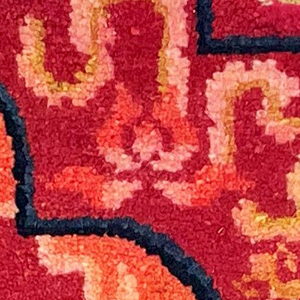
- The lotus of illumination, purity, renunciation, and divinity
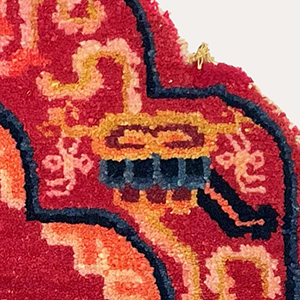
- The umbrella or parasol of wealth or royalty
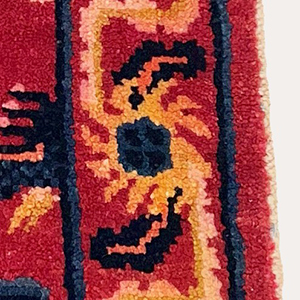
- The wheel as the emblem for spiritual change and transformation
In Tibetan Buddhism, the Eight Auspicious Symbols correspond to Buddha’s body. The parasol is Buddha’s head; the goldfish are eyes; the lotus is the tongue; the treasure vase is the neck; the wheel is the feet; the banner is the body; the conch is speech; and the endless knot is the mind of Buddha. The Eight Auspicious Symbols appear in many Tibetan decorative arts, such as furniture, tents, and daily necessities. Many Tibetan people believe decorating with the Eight Auspicious Symbols can bring them good fortune. The central dragon symbol could indicate that this mat’s owner had a privileged socioeconomic status, such as an aristocrat.
This exhibit was curated by Michelle Ye (’25).

